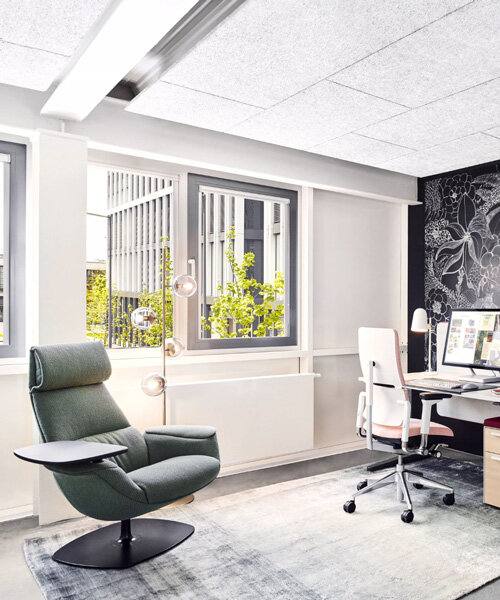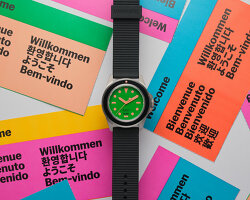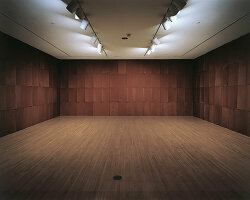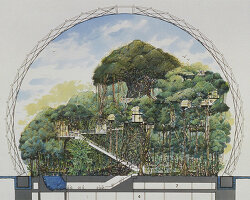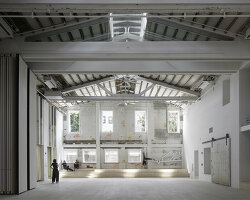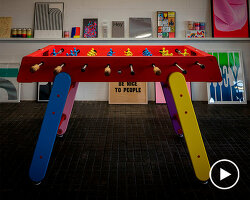talk to me at MoMA‘wifi dowsing rod’ by mike thompson, one of the projects at MoMA’s exhibit, ‘talk to me’ image by susana camara leret
talk to me: design and the communication between people and objects MoMA, new york city on now until november 7, 2011
the long-awaited exhibition ‘talk to me: design and the communication between people and objects’ has opened at MoMA in new york. organized by the design department’s senior curator paola antonelli and curatorial assistant kate carmody, the exhibit features a range of works interpreting humans’ interactions with machines, from diagrams and interfaces to products and furniture.
having gathered a preliminary pool of projects through a user submissions blog, the final selection is separated into six categories: objects, bodies, life, city, worlds, and double entendre. the sprawling exhibition also promotes visitor interaction and continued dialogue about the nearly 200 projects represented with twitter hashtags and RFID tags for each. designboom has selected some interesting ones below:
‘wifi dowsing rod’ by eindhoven-based designer mike thompson adapts the familiar form of a divining rod– believed to hold mythical powers of locating underground water sources–to a contemporary function: thompson has created a tool which finds and indicates strength of nearby wireless signals.
 ‘rubik’s cube for the blind’ by konstantin datz image by konstantin datz
‘rubik’s cube for the blind’ by konstantin datz image by konstantin datz
german designer konstantin datz has reimagined the rubik’s cube game for people who cannot see the toy’s original colors. white panels embossed with braille words for each color are adhered to the square surfaces, transforming the puzzle from a visual into a tactile one.
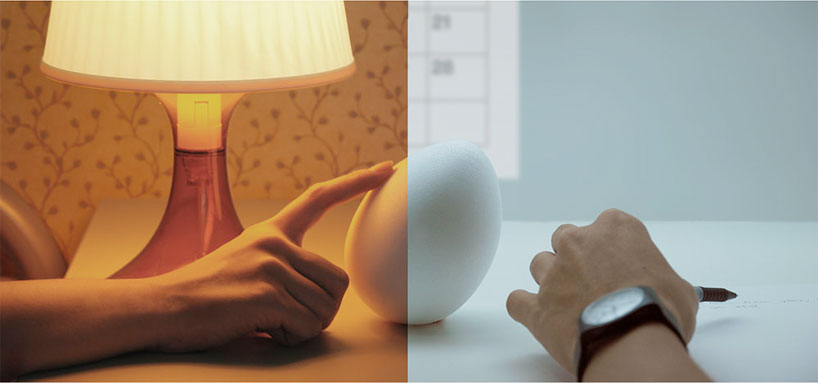 ‘roly poly’ by the national university of singapore’s design incubation centre image courtesy of national university of singapore’s design incubation centre
‘roly poly’ by the national university of singapore’s design incubation centre image courtesy of national university of singapore’s design incubation centre
‘roly poly’, designed by the design incubation centre at the national university of singapore, are a pair of egg-like objects that mirror each other’s movements, even when physically separated. two people thus can sense each other’s presence despite distances across the world: a tap of one half will create a simultaneous reaction in the other.
 ‘botanicalls’ by rob faludi, kate hartman, and kati london image by sparkfun
‘botanicalls’ by rob faludi, kate hartman, and kati london image by sparkfun
‘botanicalls’is a system that allows thirsty plants to reach out for human help, created by an ongoing collaboration between rob faludi, kate hartman, and kati london. moisture sensors allow the plant to trigger and send messages such as ‘water me please’ to its human caretaker over a wireless network, either via tweet or telephone with a human voice recording. the plants send both distress calls and notes of thanks.
‘tweenbots’ by kacie kintzer
kacie kintzer’s ‘tweenbots’ are battery-operated cardboard robots that move constantly, depending on the kindness of strangers to get where they are going. marked by flags asking passersby to point them toward a particular destination, the robots consistently made it across new york city’s washington square park, helped by people when trapped by a bench, sidewalk, pothole, etc. kintzer’s secret surveillance showed that people would interact directly with the robots and were also willing to engage other strangers in a discussion of its predicament.
 ‘berlin, city smell research’ by sissel tolaas image by sissel tolaas
‘berlin, city smell research’ by sissel tolaas image by sissel tolaas
norwegian scent expert sissel tolaas’s ‘berlin, city smell research’ examines scent as a tool to perceive space. applying headspace technology commonly used in the perfume industry, tolaas captures and synthesizes natural essences, ranging from the everyday (fresh laundry) to the less desirable (sweat, rotten fish) to create a catalog of scents that stimulate emotional responses and evoke memories.
to render an olfactory map of the berlin, tolaas applied this distillation process to various districts: the resulting scents were then contained in bottles that physically recall the city’s geography, using smell as information to chart an urban landscape.
 ‘artificial biological clock’ by revital cohen image by tuur van balen
‘artificial biological clock’ by revital cohen image by tuur van balen
israeli artist revital cohen explores modern reproductive technology with ‘artificial biological clock’: fed with information from the user’s doctor, therapist, and bank manager, the sculpture lets her know when is the right time to have a child, commenting on contemporary social pressures and expectations that dictate a woman’s childbearing ability.
— a full list of the exhibition’s projects can be found here.

